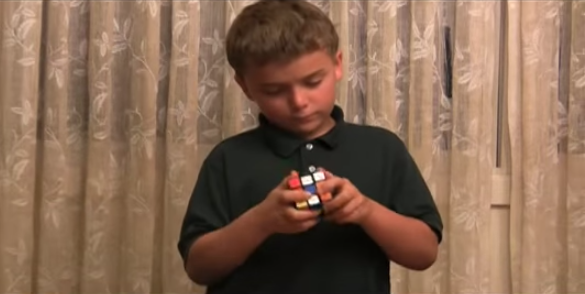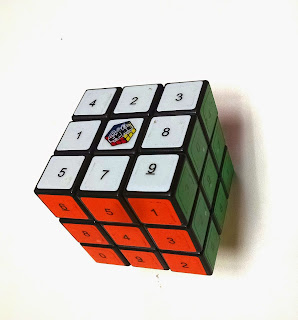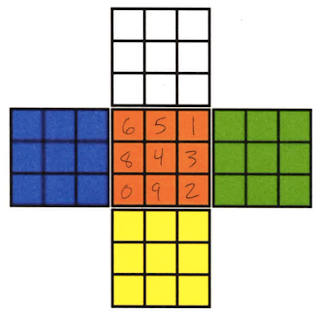The holidays are the perfect time to make math practical at home with your family! There are recipes to be made—where those fractions come in handy, gifts to be bought—where mental math and budgeting are your best friends, and gifts to be wrapped—where geometry concepts come into play.
The activities you can do with your child are endless, and you finally have the time off together to do them. Here are a few ways you can make math practical and fun during this holiday season!
Cooking
Whether you’re preparing a 7 course holiday feast or making a simple recipe, make sure to bring your child into the kitchen with you to play sous chef so you can make math practical together!
Here are a few tips for making math practical in the kitchen:
- Read the recipe first together to make sure you both understand what ingredients you’ll need, and what steps will be taken.
- Ask your child to collect the ingredients for the recipe on their own, and have them count out loud as they add each ingredient.
- Pretend you only have one type of measuring cup and ask them to convert the amounts using only that measuring cup.
- Change up ingredient amounts using proportional thinking – for example, if you’re making holiday cookies, and the recipe calls for 2 ½ cups of flour, ask your child to make a half batch, and convert all the ingredients accordingly.
- Work with cooking times, changing up the variables so your child has to use proportional thinking to get the right cooking time. For example, if you have a 10 pound turkey, and you need to thaw it for 1 hour for every pound, ask your child how long you must thaw it.
- Ask your child to tell you how much the recipe costs by calculating the amount used of each ingredient vs. the total amount bought, using the store prices.
- For older students, ask them to inventory the ingredients and see how many servings would be possible using what you have on hand.
- Older students can also convert the cooking time from Fahrenheit to Celsius, or vice versa.
Remember to keep it fun and positive – boost your child’s confidence and they’ll be eager to help in the kitchen putting their math skills to use all year long!
Gift Buying
The holiday season is full of gift giving and shopping – make sure to involve your child in the budgeting and buying of gifts so they can work on their math skills!
Here are a few ideas for math practice that can be done while gift giving:
- The holiday season is full of fantastic sales – whether you take advantage of these deals or not, make sure you and your child go through the sales, and calculate the cost of items using percentages and proportional thinking (ex. 50% off, or 2 for 1).
- Make a holiday budget, and assign your child the task of finding a combination of gifts online or in the store that maximizes the budget and yields the most gifts, or the most appropriate gifts.
- Give your child the task of finding the best deal on certain gift items, searching online and in stores for sales, and calculating the total cost, including tax and shipping.
- Have your child work on gift giving to others less fortunate by organizing a canned food drive together, or a donation box to buy gifts for needy families. Ask them to count and sort food items, and plan how they should be delivered. Have them keep track of donations, and budget where donation money goes and how it is spent.
Gift Wrapping
Gift wrapping is a great way to work with your child on measurements, geometry and proportional thinking. Here are a few fun ways to make sure math stays front and center as you make your gifts gorgeous!
- Ask your child to measure each gift, and calculate how much wrapping paper they will need to completely cover the surface of the gift.
- Using the wrapping supplies you have on hand (bows, ribbon, paper, bags), ask your child to calculate how many unique wrapping combinations you can make as you wrap gifts.
- For older students, ask them to calculate the maximum amount of material a gift box can hold, and the minimum amount of wrapping paper that would be needed to cover it, expressing it as a percentage of the total surface area of the box.
- For older students involved in calculus, pre-cal and algebra, check out this fun holiday video about gift-wrapping:
Here are some fun decorations younger students can make themselves while also practicing their math skills!
Head over here to download this Santa addition coloring activity!
Make sure to hang these decorations with pride when your child completes them, and have them explain how they made them to any guests you have over the holidays!
Tangrams are always a fun exercise for students of any age, so why not work with holiday themed tangrams?
What better way to spend time with your family than by playing board games together? These games will not only give you quality time with your children, it will activate their math skills!
Objective: Take turns playing cards to add up to one dollar.
This is a great game to play in conjunction with holiday budgeting.
Objective: Use multiplication facts to get rid of cards quickly
This is a fun sudden death style game that will have the whole family jumping in and working quickly, and is great for practicing skip counting and multiplication.
Goblet Gobblers
Objective: Place and move pieces on a 3x3 grid to place 3 in a row
This game is great for critical thinking, strategy, and spatial reasoning.
Remember, math is not only relevant in a classroom setting – make it practical and fun at home as you enjoy this holiday season with your family!
Do YOU have any fun holiday math-related activities you do with your family? Let us know in the comments, or share them with us on Facebook and Twitter using the hashtag #holidaymath!

















.jpg)
























